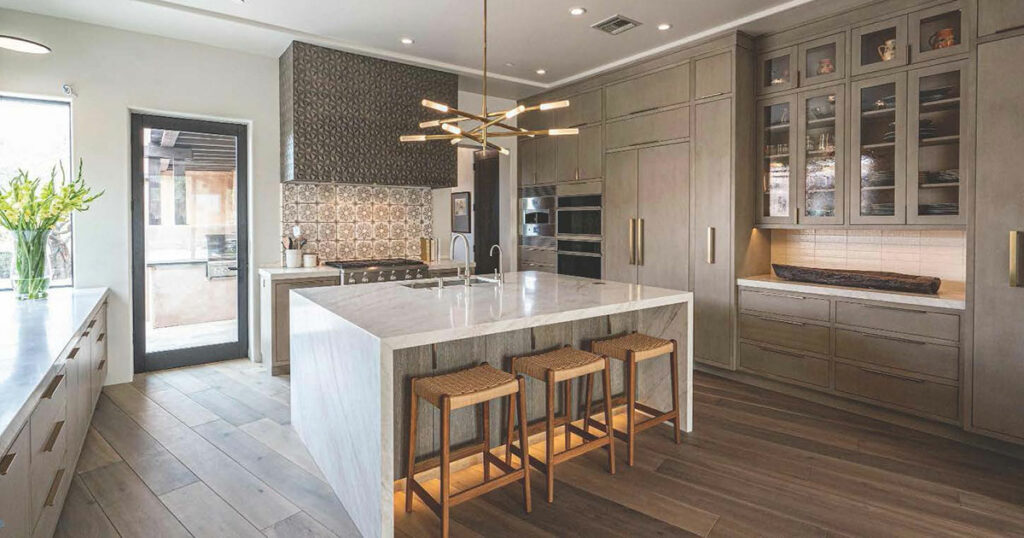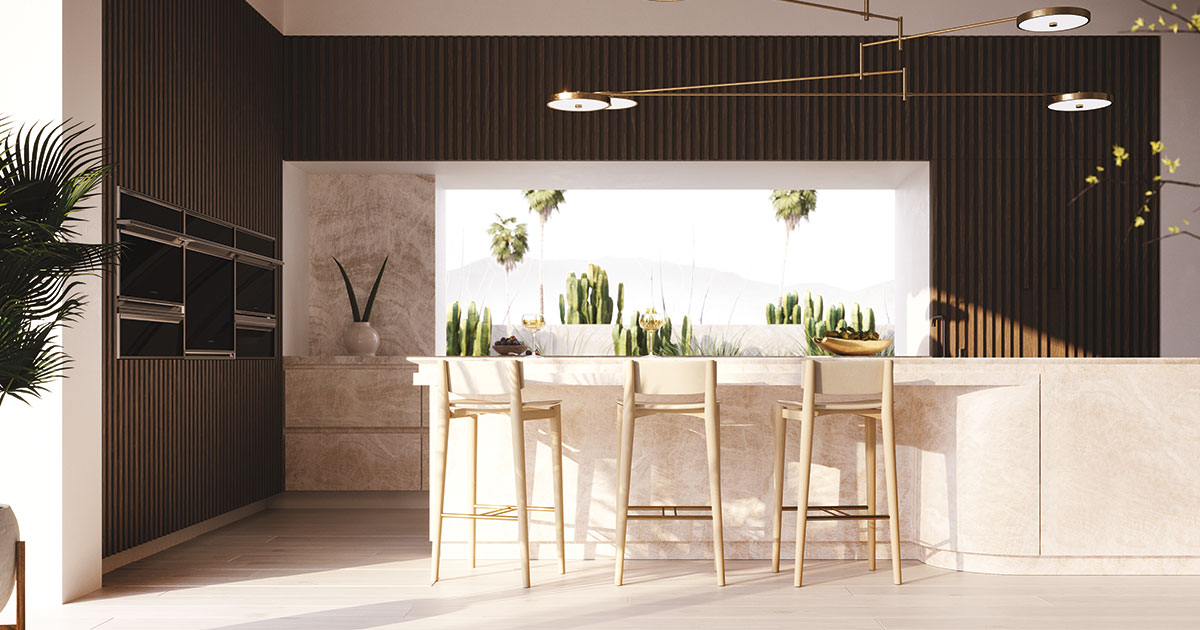Whether you’re remodeling an existing kitchen or building a dream space from the ground up, the goals for the most used room in the home are the same: Create a kitchen that is both functional and beautiful. Consider things like workflow and how many people may be in the area at one time to guide the decisions made in terms of which kitchen layout makes the most sense.
Here, we will take a look at the five most common kitchen layouts and explore the benefits and drawbacks of each. From creating a perfectly appointed work triangle to ensuring that the chef doesn’t feel isolated from the rest of the family, present these options to your clients to ensure they’ll love the final product.
One-Wall Layout
In a single-wall kitchen, the cabinets, countertops, and appliances stretch along one expanse. This streamlined approach is ideal for small, open spaces. One-wall kitchens are commonly found in studio- or loft-style spaces, though they can provide a sleek look in any home without consuming too much of the floorplan. While a one-wall plan can eliminate traffic bottlenecks, it also eliminates the benefit of the classic work triangle, potentially adding more steps between stations for the cook.
Galley Layout
A galley-style kitchen is comprised of two parallel walls with a single pathway between them, and the key kitchen features—appliances, cabinets, and countertops—line each side. This layout can be highly efficient as it lends itself well to a tight work triangle by putting the range, refrigerator, and sink within convenient proximity. For the one working in the kitchen, however, it can feel isolating, cutting the chef off from family or guests who are likely going to mingle in a different area. Given the galley’s narrow aisle, two cooks working at once may also be problematic.

U-Shaped Layout
A U-shaped kitchen features three connected walls formatted in a three-sided design. This layout offers a more spacious approach to the work triangle, and having a third wall for storage offers an advantage over the galley and one-wall layouts. Be mindful, though, that if the U-shape design is in a smaller space, it can create a feeling of confinement. You can add an air of spaciousness by eliminating the upper cabinets on one wall to create a peninsula with plenty of open space.
G-Shaped Layout
The G-shaped kitchen builds on the U design by adding a connected peninsula for increased countertop space and storage. With distinct workstations, this layout makes the most of a small space for two or more cooks. While it can feel a bit crowded, a benefit of the peninsula is that you can add stools along the outside edge to create an extra dining surface and entertaining zone.
L-Shaped Layout
For those who prefer a more open and airy design, the L-shaped layout may be the perfect solution. The openness eliminates the cramped feel of tighter quarters, yet the spacious feel that the layout creates not only allows for design flexibility but offers enough room for an island or dining table to be added to the area as well.
As you work with your clients to develop the ideal kitchen design to suit their needs, consider these options and the pros and cons of each. And when it’s time to identify the ideal appliances to finish the space, a Friedman’s specialist is excited to help.
